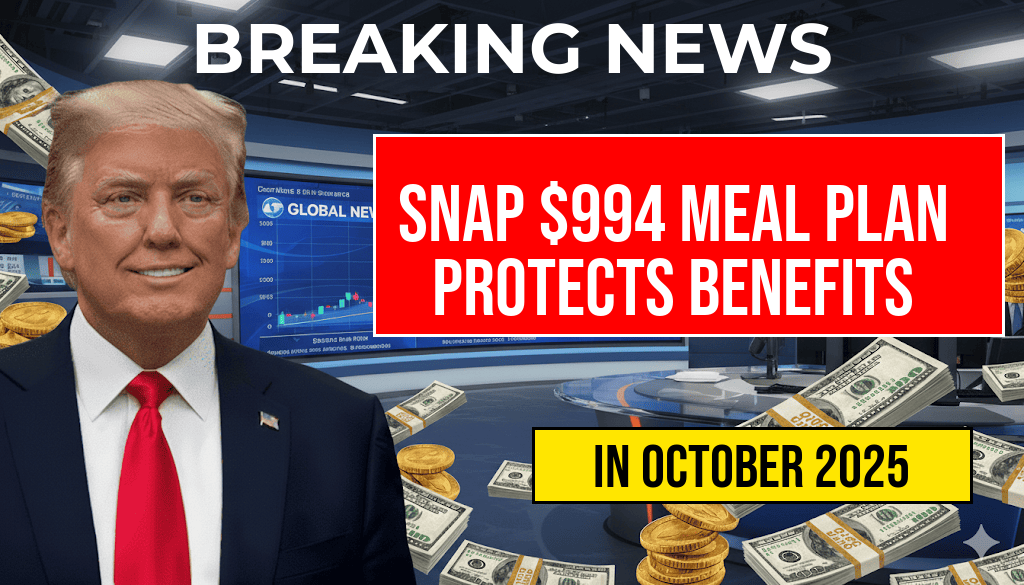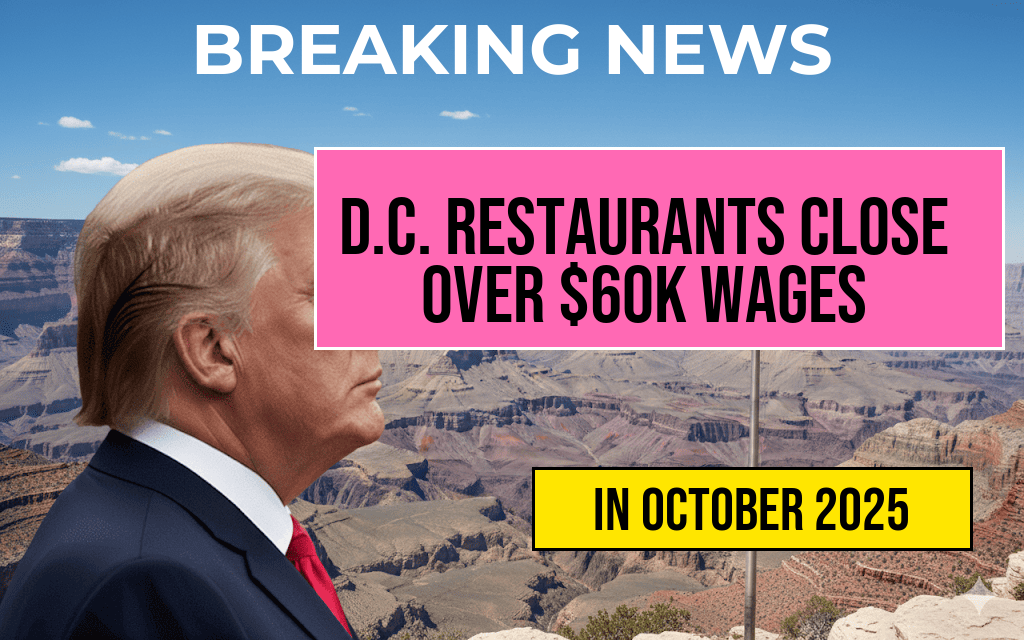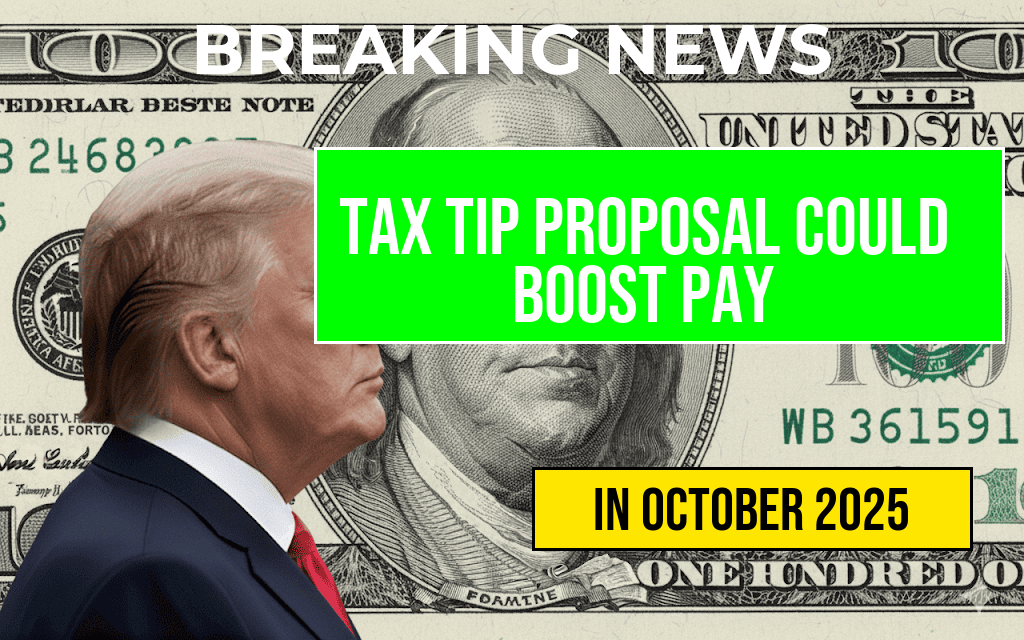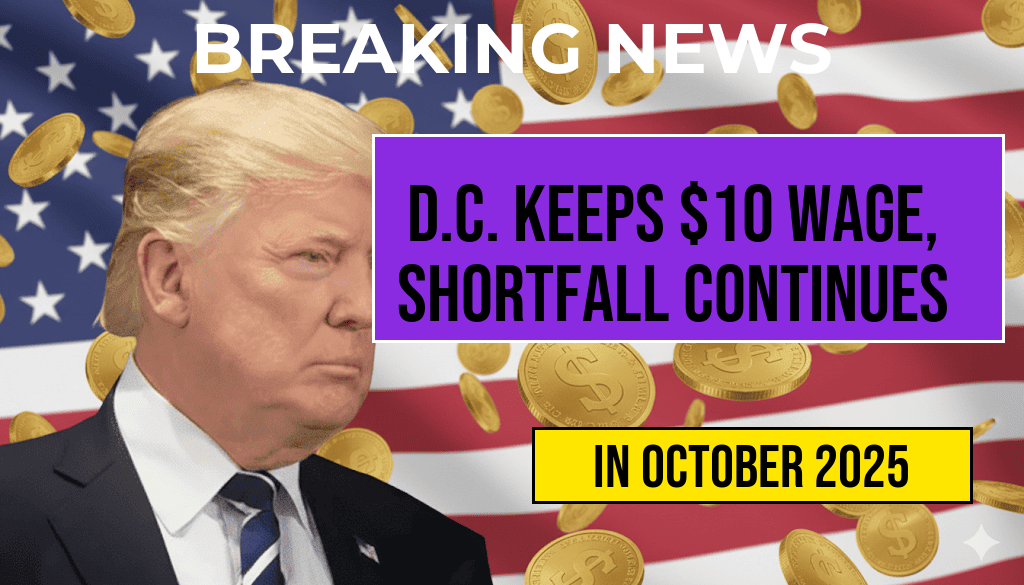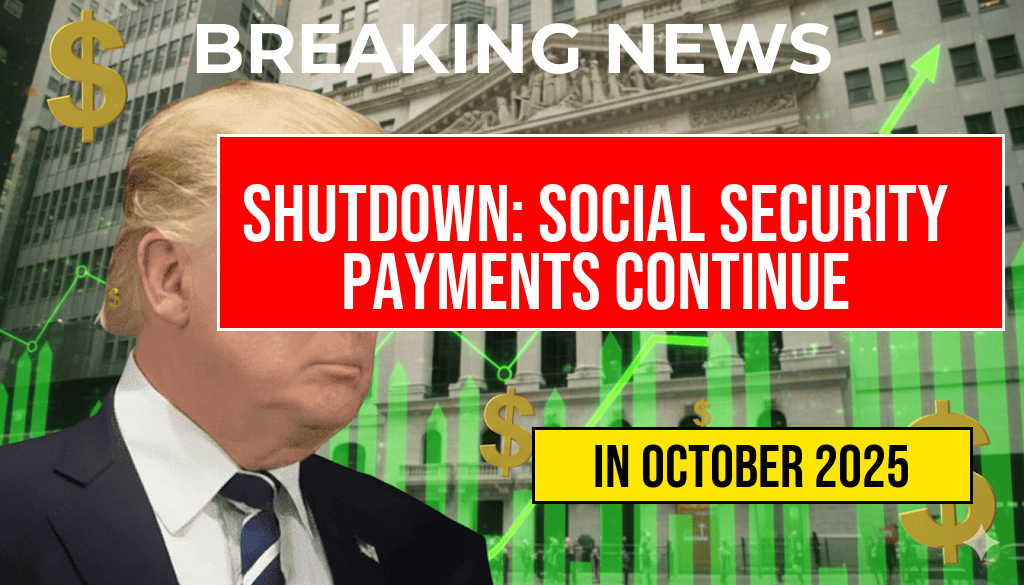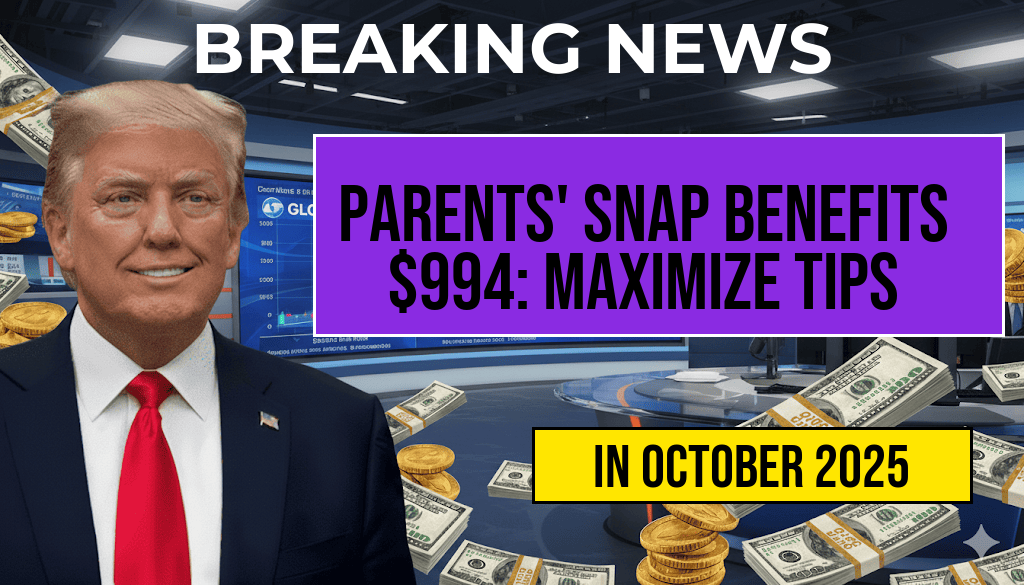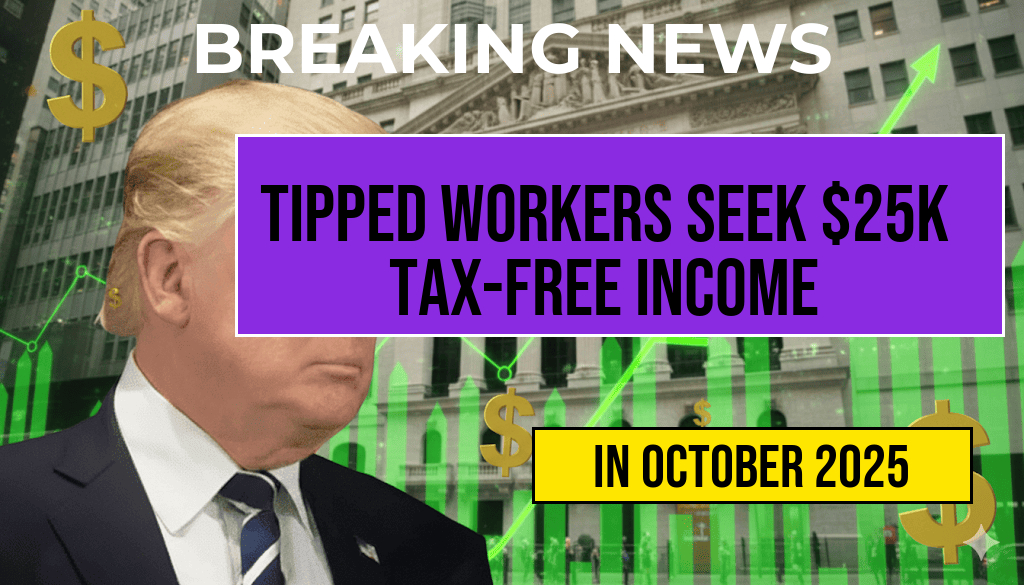Restaurant Wage Update: D.C. Maintains $10 Base Salary Amid $4,160 Annual Shortfall Compared to $12 Hourly Rate
The District of Columbia has reaffirmed its minimum wage policy for restaurant workers, sticking with a $10 per hour base salary despite ongoing debates over adequacy and economic fairness. While this rate aligns with federal and local standards, a recent analysis reveals a significant annual shortfall—approximately $4,160—when comparing earnings to a hypothetical $12 hourly rate, which some industry advocates argue better reflects the cost of living and fair compensation. This discrepancy underscores ongoing tensions between maintaining affordable dining experiences and ensuring restaurant employees receive a livable income, especially amid rising inflation and shifting labor market dynamics.
Background of Washington D.C.’s Wage Standards
Washington D.C. has a history of setting progressive labor standards, with the city’s minimum wage increasing steadily over the past decade. As of 2023, the city’s minimum wage stands at $16.10 per hour for large employers, but specific sectors like hospitality often operate under different rules. Many restaurant workers, particularly tipped employees, rely heavily on tips to reach a livable income, which complicates wage calculations and policy debates.
Current Wage Policy and Industry Impact
The decision to maintain the $10 minimum wage for restaurant staff reflects a balancing act between supporting local businesses and advocating for worker rights. Restaurant owners argue that higher mandated wages could lead to increased menu prices, reduced employment opportunities, and diminished competitiveness in a bustling tourism-driven economy. Conversely, labor advocates contend that the current rates fall short of covering basic living expenses, especially when combined with the reliance on tips, which can be inconsistent.
Financial Gap Analysis: $12 versus $10
| Wage Rate | Hourly Rate | Annual Income (assuming 40 hours/week, 52 weeks) | Difference |
|---|---|---|---|
| $12 | $12 | $24,960 | N/A |
| Current D.C. minimum | $10 | $20,800 | $4,160 |
The $4,160 annual shortfall highlights how the $10 wage leaves workers earning less than what would be considered a fair, living wage in the city. Extending the comparison, the gap becomes even more evident when considering inflation and increased living costs, which have risen approximately 6.5% over the past year, according to the U.S. Bureau of Labor Statistics (BLS CPI Data).
Economic and Social Considerations
Many industry analysts point out that the hospitality sector’s employment figures are sensitive to wage policies. Higher wages could potentially reduce turnover, improve morale, and lead to better customer service, but they also risk raising operational costs. For restaurant owners, especially small businesses, these increased costs might translate to higher menu prices, which could steer price-sensitive customers elsewhere.
On the other side, workers argue that wages should reflect the rising costs of housing, healthcare, and transportation. The cost of living in D.C. has surged, making it increasingly difficult for employees earning the current minimum to meet financial obligations without relying heavily on tips, which are variable and sometimes insufficient.
Policy Perspectives and Future Outlook
District officials have signaled openness to revisiting wage standards, especially as economic conditions evolve. Advocates for a higher minimum wage emphasize that equitable pay is essential for reducing poverty and fostering a stable workforce. Meanwhile, restaurant associations warn of potential job cuts or increased automation if wages rise significantly.
Legislators are expected to monitor economic indicators closely and may consider phased adjustments or supplementary policies such as targeted subsidies or tax incentives to support small eateries and their employees. The debate remains a focal point in the broader context of labor rights and economic recovery efforts post-pandemic.
Expert Opinions and Broader Implications
- Labor Economists: argue that a wage of at least $12 per hour aligns more closely with living expenses and would likely improve worker retention.
- Business Leaders: caution that abrupt increases could lead to reduced hiring or higher consumer prices, impacting D.C.’s vibrant restaurant scene.
- Policy Analysts: suggest exploring alternative strategies such as earned income tax credits or targeted support to bridge the wage gap without placing undue burden on employers.
As discussions continue, the outcome will influence the city’s economic landscape and set a precedent for other jurisdictions grappling with similar wage and cost-of-living issues. The debate underscores the ongoing struggle to balance fair compensation with sustainable business practices in one of the nation’s most dynamic urban environments.
Frequently Asked Questions
What is the current minimum wage for restaurant workers in Washington D.C.?
The current minimum wage for restaurant workers in Washington D.C. remains at $10 per hour, despite recent discussions about wage increases.
How does the current wage compare to the recommended rate?
The $10 per hour wage results in an annual shortfall of $4,160 when compared to a $12 hourly rate that many advocates consider fair for restaurant employees.
Why has Washington D.C. maintained the $10 minimum wage despite the shortfall?
The decision to maintain the $10 minimum wage stems from policy considerations and economic factors, with officials citing concerns about business impacts and cost of living.
What are the potential implications for restaurant workers due to this wage gap?
Restaurant workers may experience financial hardship and decreased purchasing power due to the wage shortfall compared to the recommended rate.
Are there any plans to address the wage discrepancy in the future?
Currently, there are no confirmed plans to increase the base salary beyond $10 per hour, but discussions continue among policymakers and labor advocates about potential wage adjustments.

